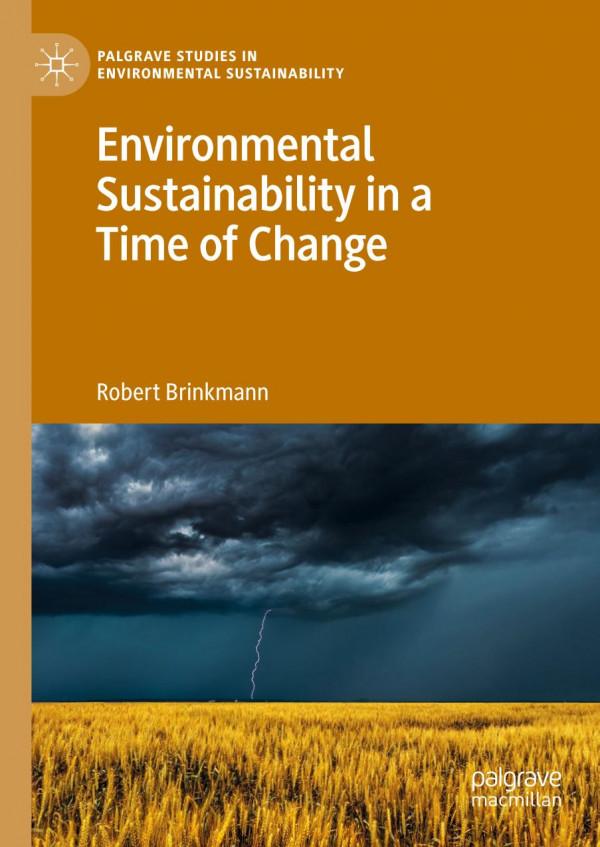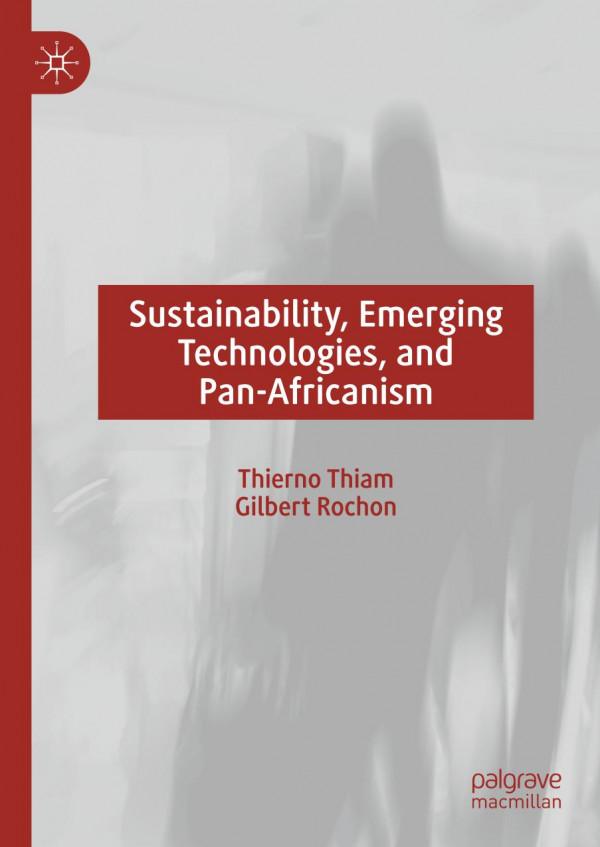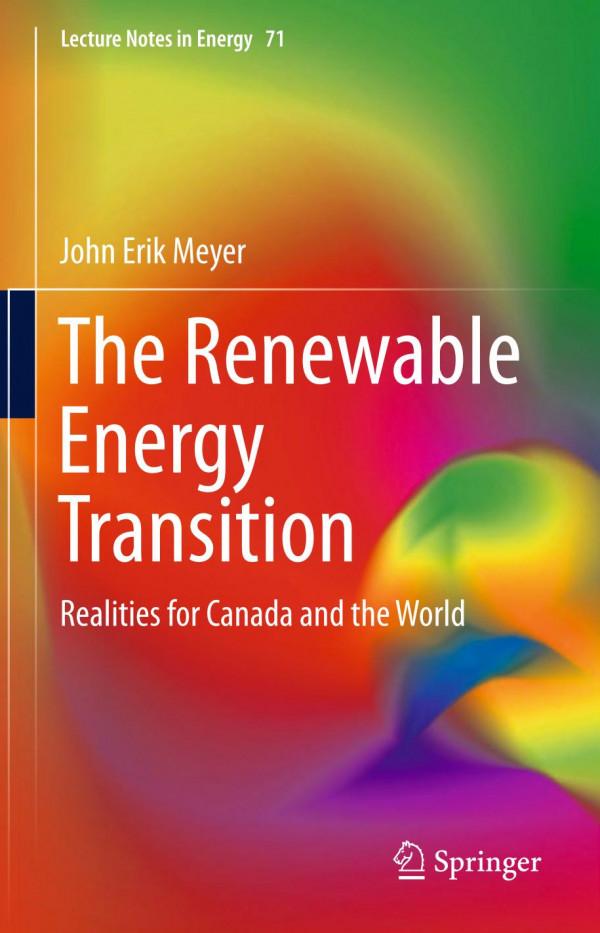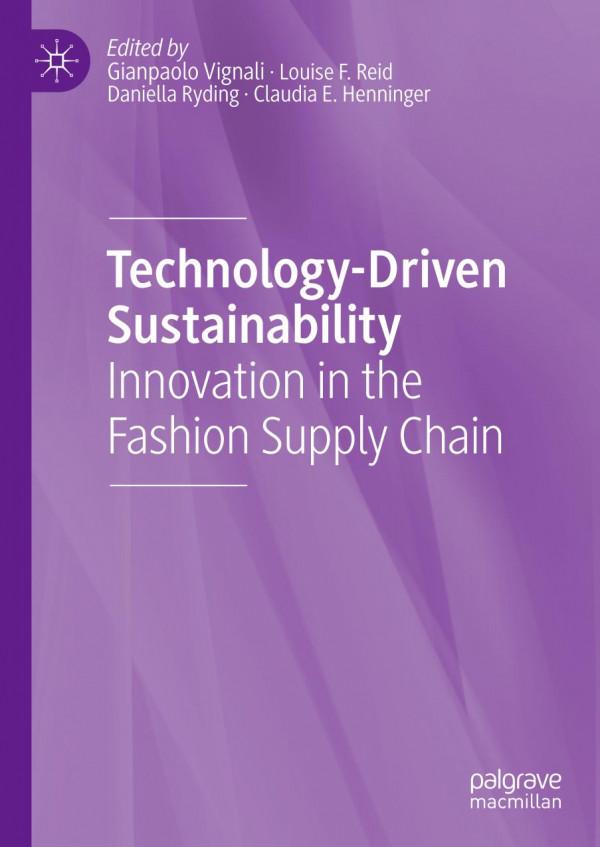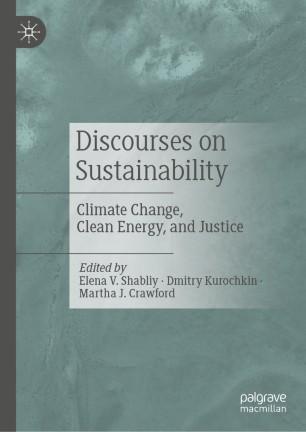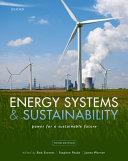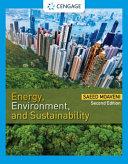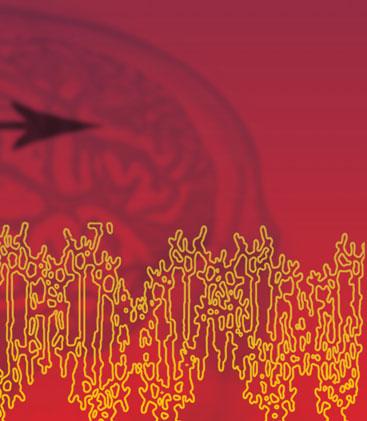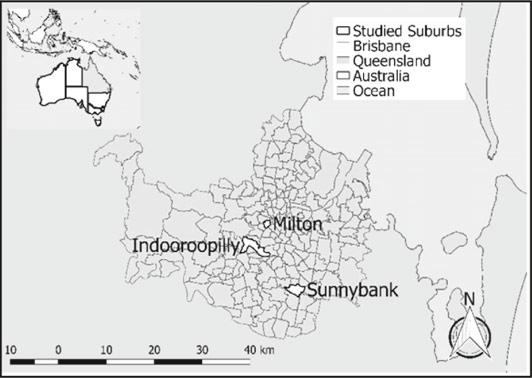InternationalProgrammeCommittee
Dr.MohamedAbbas,UDES/CDER,Algeria
Dr.KouzouAbdellah,UniversityofDjelfa,Algeria
Prof.AbdelGhaniAissaoui,UniversityofBechar,Algeria
Dr.MahmoodAlam,UniversityofBrighton,UK
Dr.NaderAnani,UniversityofChichester,UK
Dr.MartinAnda,MurdochUniversity,Australia
Prof.ShadyAttia,UniversityofLiege,Belgium
Prof.AhmadTaherAzar,BenhaUniversity,Egypt
Dr.MagdaBaborska-Narożny,WroclawUniversityofTechnology,Poland
Dr.GabrieleBernardini,UniversitaPolitecnicadelleMarche,Italy
Dr.StephenBerry,UniversityofSouthAustralia,Australia
Prof.FredeBlaabjerg,AalborgUniversity,Denmark
Dr.SamuelBrunner,Empa,Switzerland
Prof.AlfonsoCapozzoli,PolitecnicodiTorino,Italy
Prof.FrancescoCausone,PolitecnicodiMilano,Italy
Dr.BorisCeranic,UniversityofDerby,UK
Prof.MohammedChadli,UniversityofPicardieJulesVerne,France
Prof.ChristopherChao,TheUniversityofHongKong,HongKong
Dr.FathiaChekired,UDES/CDER,Algeria
Dr.GeorgeZhenChen,UniversityofStrathclyde,UK
Dr.GiacomoChiesa,PolitecnicodiTorino,Italy
Dr.AlfonsoChinnici,TheUniversityofAdelaide,Australia
Dr.MartaChinnici,ENEA,Italy
Prof.FrancescoCalise,UniversitadegliStudidiNapoliFedericoII,Italy
Prof.DulceCoelho,PolytechnicInstituteofCoimbra,ISEC,Portugal
Dr.StefanoCascone,UniversityofCatania,Italy
Prof.PooyaDavari,AalborgUniversity,Denmark
Prof.MohamedDjemai,UniversitedeValenciennesetduHainautCambresis, France
Prof.TomislavDragicevic,AalborgUniversity,Denmark
Dr.SonjaDragojlovic-Oliveira,UniversityofWestEngland,UK
Dr.MahieddineEmziane,MasdarInstituteofScienceandTechnology,AbuDhabi
Prof.YoussefErrami,ChouaibDoukkaliUniversity,Morocco
Prof.NajibEssounbouli,Université deReimsChampagne-Ardenne,France
Dr.StefanoFantucci,PolitecnicodiTorino,Italy
Dr.FatimaFarinha,UniversidadedoAlgarve,Portugal
Dr.TiagoMiguelFerreira,UniversityofMinho,Portugal
Prof.AntonioGagliano,UniversityofCatania,Italy
Dr.MichalGanobjak,Empa,Switzerland
Prof.GeorgeGeorghiou,UniversityofCyprus,Cyprus
Dr.ElisaDiGiuseppe,Università PolitecnicadelleMarche,Italy
Dr.ChengSiewGoh,Heriot-WattUniversity,Malaysia
Prof.Dr.-Ing.Lars-O.Gusig,UniversityofAppliedSciencesandArtsHannover, Germany
Prof.MikeHoxley,AngliaRuskinUniversity,UK
Dr.AtifIqbal,QatarUniversity,Qatar
Prof.HongJin,HarbinInstituteofTechnology,China
Assoc.Prof.MohammadArifKamal,AligarhMuslimUniversity,India
Prof.GeorgeKarani,CardiffMetropolitanUniversity,UK
Prof.KhalilKassmi,MohamedPremierUniversity,Morocco
Prof.JohnKinuthia,UniversityofSouthWales,UK
Prof.DeniaKolokotsa,TechnicalUniversityofCrete,Greece
Prof.SumathyKrishnan,NorthDakotaStateUniversity,USA
Dr.AkosLakatos,UniversityofDebrecen,Hungary
Dr.JohnLittlewood,CardiffMetropolitanUniversity,UK
Assist.Prof.ValerioLoVerso,PolitecnicodiTorino,Italy
Prof.Dr.BrunoMarques,UniversidadeLusiadadoNorte,Portugal
Prof.AntonioGomes-Martins,UniversityofCoimbra,Portugal
Prof.MarcoCarloMasoero,PolitecnicodiTorino,Italy
Dr.JasperMbachu,BondUniversity,Australia
Dr.NachidaKasbadjiMerzouk,CDER,Algeria
Prof.AhmedMezrhab,UniversityMohammedFirst,Oujda,Morocco
Dr.PabloBenitezMongelos,UniversityofAveiro,Portugal
Mr.JonMoorhouse,UniversityofLiverpool,UK
Prof.EugenioMorello,PolitecnicodiMilano,Italy
Dr.MicheleMorganti,SapienzaUniversityofRome,Italy
Prof.NacerKouiderM’Sirdi,LaboratoiredesSciencesdel’Informationetdes Systèmes,France
Prof.AzizNaamane,AixMarseilleUniversite,France
Dr.BenedettoNastasi,TuDelftUniversityofTechnology,TheNetherlands
Prof.FrancescoNocera,UniversityofCatania,Italy
Mr.EmekaEfeOsaji,LeedsBeckettUniversity,UK
Dr.PaulOsmond,UniversityofNewSouthWales,Australia
Dr.FabianaSilveroPrieto,UniversityofAveiro,Portugal
Prof.AbdelhamidRabhi,MISAmiens,France
Prof.JoãoRamos,PolytechnicofLeiria,Portugal
Prof.CarloRenno,UniversityofSalerno,Italy
Prof.SaffaRiffat,UniversityofNottingham,UK
Dr.EricRoberts,IntegratedEnvironmentalSolutionsLtd,UK
Prof.FernandaRodrigues,UniversityofAveiro,Portugal
Prof.AntonioRuano,UniversityofAlgarve,Portugal
Dr.AtulSagade,RenewableEnergyInnovationandResearchFoundation,India
Dr.WilfriedvanSark,UtrechtUniversity,TheNetherlands
Assist.Prof.FrancescaScalisi,UniversityofPalermo,Italy
Prof.GaetanoAntonioSciuto,UniversityofCatania,Italy
Mrs.GeraldineSeguela,UniversityofTechnologySydney,Australia
Assoc.Prof.BegumSertyesilisik,IstanbulTechnicalUniversity,Turkey
Dr.AnjaliSharmaKrishan,ArchitectPlanner,India
Prof.NilkanthN.Shinde,ShivajiUniversity,India
Dr.MarinaSokolova,OrelStateUniversity,Russia
Prof.ShyamLalSoni,MalaviyaNationalInstituteofTechnology,India
Prof.FionnStevenson,TheUniversityofSheffieldSchoolofArchitecture,UK
Dr.AliTahri,UniversityofscienceandtechnologyofOranMohamedBoudiaf, Algeria
Prof.GiuseppeMarcoTina,UniversityofCatania,Italy
Mrs.LindaToledo,DeMontfortUniversity,UK
Prof.PaoloTronville,PolitecnicodiTorino,Italy
Dr.SimonTucker,LiverpoolJohnMooresUniversity,UK
Mrs.MariaUnuigbe,LeedsBeckettUniversity,UK
Prof.RomeuVicente,UniversityofAveiro,Portugal
Dr.SimonWalters,UniversityofBrighton,UK
Prof.HuaiWang,AalborgUniversity,Denmark
Prof.XiongfeiWang,AalborgUniversity,Denmark
Dr.JannisWernery,Empa,Switzerland
Assoc.Prof.SaraWilkinson,UniversityofTechnologySydney,Australia
Prof.YonghengYang,AalborgUniversity,Denmark
Prof.GeunYoungYun,KyungHeeUniversity,SouthKorea
Prof.SmailZouggar,UniversityMohammed firstOujda,Morocco
Preface
The11thInternationalConferenceonSustainabilityandEnergyinBuildings2019 (SEB-19)wasamajorinternationalconferenceheldinBudapestduring4–5July 2019organisedbyKESInternationalinpartnershipwithCardiffMetropolitan University,Wales,UK.
SEB-19invitedcontributionsonarangeoftopicsrelatedtosustainablebuildingsandexploredinnovativethemesregardingsustainableenergysystems.
Theaimoftheconferencewastobringtogetherresearchersandgovernmentand industryprofessionalstodiscussthefutureofenergyinbuildings,neighbourhoods andcitiesfromatheoretical,practical,implementationandsimulationperspective. Theconferenceformedanexcitingchancetopresent,interactandlearnaboutthe latestresearchandpracticaldevelopmentsonthesubject.
TheconferencefeaturedGeneralTrackschairedbyexpertsinthe fi eld,andin addition,13InvitedSessionswereproposedbyprominentresearchers.
SEB-19featuredtwokeynotespeakers:PhilippeMoseley,SeniorProject AdvisorfromtheExecutiveAgencyforSmallandMedium-sizedEnterprises (EASME),attheEuropeanCommission,whogaveatalkentitled EUsupportto decarbonisethebuildingstock andProf.FernandaRodrigues,UniversityofAveiro, Portugal,whogaveatalkentitled ClimateChanges’ Impactonthedurabilityand energyperformanceofbuildings.
Theconferenceattractedsubmissionsfromaroundtheworld.Submissionsfor theFull-PaperTrackweresubjectedtoablindpeer-reviewprocess.Onlythebest ofthesewereselectedforpresentationattheconferenceandpublicationinthe proceedingsinavolumeintheKES-Springer ‘SmartInnovation,Systemsand Technologies’ series.SubmissionsfortheShort-PaperTrackweresubjectedtoa ‘lighter-touch’ reviewandmaybepublishedelsewhere.
Thanksareduetotheverymanypeoplewhohavegiventheirtimeandgoodwill freelytomakeSEB-19asuccess.Wewouldliketothankthemembersofthe InternationalProgrammeCommitteewhowereessentialinprovidingtheirreviews oftheconferencepapers.Wethankthehigh-profi lekeynotespeakersforproviding interestingtalkstoinformdelegatesandprovokediscussion.Importantcontributors
totheconferenceweremadebytheauthors,presentersanddelegateswithoutwhom theconferencecouldnothavetakenplace,soweofferthemourthanks.
Itisintendedthatthisvolumeprovidesausefulandinformativesnapshotof recentresearchdevelopmentsintheimportantandvibrantareaof Sustainabilityin EnergyandBuildings. SEB-19ConferenceChairs
Poole,UKProf.RobertJ.Howlett Cardiff,Wales,UKDr.JohnLittlewood Turin,ItalyDr.AlfonsoCapozzoli
Canberra,AustraliaProf.LakhmiC.Jain x Preface
1TheUtilisationofSmartMeterTechnologytoIncreaseEnergy AwarenessforResidentialBuildingsinQueensland,Australia 1 OlusolaCharlesAkinsipe,DomagojLeskarac,SaschaStegen, DiegoMoyaandParasadKaparaju
2ImpactofBuildingMassingonEnergyEfficientSchool Buildings ............................................. 11 YaseminAfacanandAliRanjbar
3SolarHomeSystemwithPeak-ShavingFunctionandSmart ControlinHotWaterSupply ............................. 23 Bin-JuineHuang,Po-ChienHsu,Shen-JieSia,Min-HanWu, Zi-MingDong,Jia-WeiWang,Ming-JiaLee,Jen-FuYeh, Min-TsoWu,Ji-DingWu,Yan-AnPan,Ming-ShianChen, Po-HsienWu,KangLiandKung-YenLee
4InfluentialFactorsonUsingReclaimedandRecycled BuildingMaterials 37 ZahraBalador,MortenGjerdeandNigelIsaacs
5EnergyandEconomicAnalysesforSupportingEarlyDesign Stages:IntroducingUncertaintyinSimulations 49 GiacomoChiesaandElenaFregonara
6UsingEvidenceAccumulation-BasedClusteringandSymbolic TransformationtoGroupMultipleBuildingsBasedonElectricity UsagePatterns ........................................ 61 KehuaLi,ZhenjunMa,DuaneRobinsonandJunMa
7LaboratoryTestsofHigh-PerformanceThermalInsulations ..... 73 ZsoltKovács,SándorSzanyi,IstvánBudaiand ÁkosLakatos
8AConceptualMethodologyforEstimatingEmbodiedCarbon EmissionsofBuildingsinSriLanka 83 AmalkaNawarathna,ZaidAlwan,BarryGledson andNirodhaFernando
9SuitabilityofPassivhausDesignforHousingProjects inColombia ..........................................
VincenzoCostanzo,J.E.CarrilloGómez,GianpieroEvola andLuigiMarletta
10Earth–AirHeatExchangerPotentialUnderFutureClimate ChangeScenariosinNineNorthAmericanCities .............. 109 A.Zajch,W.GoughandG.Chiesa
11DevelopingaDidacticThermalChamberforBuildingEnvelope MaterialTesting 121
BecharaNehme,FadiMoucharrafie,TildaAkiki,RidaNuwayhid, PaulAbiKhattarZgheibandBarbarZeghondy
12TheRelationshipBetweentheFormofEnclosedResidential AreasandMicroclimateinSevereColdAreaofChina 135 TingkaiYan,HongJinandHuaZhao
13TheSuccessfulIntroductionofEnergyEffi ciencyinHigher EducationInstitutionBuildings ............................ 147
DirkV.H.K.Franco,MarijkeMaes,LievenVanstraelen, MiquelCasasandMarleenSchepers
14LCAIntegrationintheConstructionIndustry:ACaseStudy ofaSustainableBuildinginAveiroUniversity ................ 159 KamarAljundi,FernandaRodrigues,ArmandoPintoandAnaDias
15Standard-BasedAnalysisofMeasurementUncertainty fortheDeterminationofThermalConductivityofSuper InsulatingMaterials 171 ChiaraCucchi,AliceLorenzati,SebastianTreml, ChristophSprengardandMarcoPerino
16FieldExperimentalStudyonEnergyPerformanceofAerogel GlazingswithHollowSilica:PreliminaryResults inMid-SeasonConditions ................................ 185 C.Buratti,E.Moretti,E.Belloni,F.Merli,V.PiermattiandT.Ihara
17 ‘Zukunftsquartier ’—OnthePathtoPlusEnergy NeighbourhoodsinVienna ............................... 199 JensLeibold,SimonSchneider,MomirTabakovic,ThomasZelger, DanielBell,PetraSchöfmannandNadjaBartlmä
18ElectricalDevicesIdenti ficationDrivenbyFeatures andBasedonMachineLearning 211 AndreaTundis,AliFaizanandMaxMühlhäuser
19MaslowintheMud.ContrastBetweenQualitative andQuantitativeAssessmentofThermalPerformance inHistoricBuildings .................................... 223 MarcinMateuszKołakowski
20HiddenBuildingPerformanceEvaluationSources: WhatCanTripAdvisorandOtherInformalUser-Generated DataTellUs? ......................................... 235 JulieGodefroy
21UseofanObject-OrientedSystemforOptimizingLifeCycle EmbodiedEnergyandLifeCycleMaterialCostofShopping Centres 247
K.K.Weththasinghe,André Stephan,ValerieFrancis andPiyushTiwari
22HygrothermalCharacterizationofHigh-Performance Aerogel-BasedInternalPlaster 259 StefanoFantucci,ElisaFenoglio,ValentinaSerra,MarcoPerino, MarcoDuttoandValentinaMarino
23CombiningConservationandVisitors’ FruitionforSustainable BuildingHeritageUse:ApplicationtoaHypogeum ............ 269 BenedettaGregorini,MicheleLucesoli,GabrieleBernardini, EnricoQuagliariniandMarcoD’Orazio
24EnergySavingsandSummerThermalComfortforRetrofi tted Buildings:AComplexBalance 281 GianpieroEvola,LuigiMarlettaandFedericaAvola
25BuildingEnergySimulationofTraditionalListedDwellings intheUK:DataSourcingforaBase-CaseModel 295 MichelaMenconi,NoelPaintingandPoorangPiroozfar
26BuildingInsulatingMaterialsfromAgriculturalBy-Products: AReview 309 SantiMariaCascone,StefanoCasconeandMatteoVitale
27EnergyConsumptionandRetrofittingPotentialofLatvian UnclassifiedBuildings ................................... 319 AnatolijsBorodinecs,AleksandrsGeikinsandAleksejsProzuments
28TowardsaUser-CenteredandCondition-BasedApproach inBuildingOperationandMaintenance ..................... 327 GabrieleBernardiniandElisaDiGiuseppe
29TowardsaNear-ZeroEnergyLandmarkBuilding UsingBuildingIntegratedPhotovoltaics:TheCase oftheVanUnnikBuildingatUtrechtSciencePark
WilfriedvanSarkandEelkeBontekoe
30InternalInsulationofHistoricBuildings:AStochasticApproach toLifeCycleCostingWithinRIBuildEUProject
ElisaDiGiuseppe,GianlucaMaracchini,AndreaGianangeli, GabrieleBernardiniandMarcoD’Orazio
31ProcessfortheFormulationofNaturalMortarsBased ontheUseofaNewNaturalHydraulicBinder ...............
SantiMariaCascone,GiuseppeAntonioLonghitano, RenataRapisardaandNicolettaTomasello
32AssessmentoftheEfficiencyandReliabilityoftheDistrict HeatingSystemsWithinDifferentDevelopmentScenarios 371 AleksandrsZajacs,AnatolijsBorodiņecsandRaimondsBogdanovičs
33Architects’ TacticstoEmbedas-DesignedPerformance intheDesignProcessofLowEnergyNon-domesticBuildings 383 GabrielaZapata-Lancaster
34HowMuchDoesItCosttoGoOff-GridwithRenewables? ACaseStudyofaPolygenerationSystemforaNeighbourhood inHermosillo,Mexico ................................... 395 MoritzWegener,CarlosLopezOrdóñez,AntonioIsalgué, AndersMalmquistandAndrewMartin
35StepsTowardsanOptimalBuilding-IntegratedPhotovoltaics (BIPV)ValueChainintheNetherlands ..................... 407 ErnstvanderPoel,WilfriedvanSark,YaelAartsma,ErikTeunissen, IngridvanStratenandArthurdeVries
36CitizenEngagementinEnergyEfficiencyRetrofitofPublic HousingBuildings:ALisbonCaseStudy 421 CatarinaRolimandRicardoGomes
37TheRoleofThermalInsulationintheArchitecture ofHotDesertClimates 433 CarlosLópez-Ordóñez,IsabelCrespoCabillo,JaumeRosetCalzada andHelenaCochRoura
38PerformanceofDifferentPVArrayCon figurationsUnder DifferentPartialShadingConditions ........................ 445 HaiderIbrahimandNaderAnani
39AutomaticThresholdingforSensorDataGapDetection UsingStatisticalApproach 455 HoudaNajeh,MahendraPratapSingh,StéphanePloix,KarimChabir andMohamedNaceurAbdelkrim
40HowthePositionofaRoot-TopOne-SidedWindTowerAffects ItsCross-VentilationEffectiveness ..........................
MehrnooshAhmadi
41CoolRoofswithVariableThermalInsulation:UHIMitigation andEnergySavingsforSeveralItalianCities ................. 481 MaurizioDetommaso,StefanoCascone,AntonioGagliano, FrancescoNoceraandGaetanoSciuto
42GreenSpaceFactorAssessmentofHigh-RiseResidentialAreas inHarbin,China 493 MingLu,XuetongWangandJunXing
43CriticalReviewofAgeingMechanismsandStateofHealth EstimationMethodsforBatteryPerformance 507 K.Saqli,H.Bouchareb,M.OudghiriandN.K.M’Sirdi
44ClimateAdaptationof “SmartCity” byAssessingBioclimatic ComfortforUBEM ..................................... 519 IlyaV.DunichkinandIrinaN.Ilina
45AdaptiveDesigntoMitigatetheEffectsofUHI:TheCaseStudy ofPiazzaTogliattiintheMunicipalityofScandicci ............ 531 RosaRomano,RobertoBologna,GiulioHasanaj andMariaVittoriaArnetoli
46TheCorrelationBetweenUrbanMorphologyParameters andIncidentSolarRadiationPerformancetoEnhancePedestrian Comfort,CaseStudyJeddah,SaudiArabia 543 BadiaMasoud,HelenaCochandBenoitBeckers
47ActiveBuildingsinPractice 555 JoannaClarke,PaulJones,JohnLittlewoodandDaveWorsley
48UrbanClimateandHealth:TwoStrictlyConnectedTopics intheHistoryofMeteorology ............................. 565 ChiaraBertolinandDarioCamuffo
49TheImpactofStakeholderPreferencesinMulticriteria EvaluationfortheRetrofi ttingofOfficeBuildingsinItaly ....... 581 GiuseppePinto,AlfonsoCapozzoli,MarcoSavinoPiscitelli andLauraSavoldi
50StudyoftheEffectofDifferentCon figurationsofBypassDiodes onthePerformanceofaPVString 593 HaiderIbrahimandNaderAnani
51DevelopingManagementGuidanceforGovernmentFunded DwellingRetrofi tSchemestoImproveOccupantQuality ofLife ...............................................
D.Jahic,J.R.Littlewood,G.Karani,A.Thomas,J.Atkinson andJ.Kirrane
52InnovativeUserExperienceDesignandCustomerEngagement ApproachesforResidentialDemandResponsePrograms ........ 613 MatteoBarsanti,LetiziaGarbolino,MuhammadMansoor, GiuliaRealmonte,RitaZeinoun,FrancescoCausone andValentinaFabi
53SustainabilityIssuesinContextofIndianHillTowns 629 PushplataGargandHarsimranKaur
54StudiesonThermalPerformanceofAdvancedAerogel-Based Materials 641
JürgenFrick,MarinaStipetić,OliverMielichandHaraldGarrecht
55DesignofanAdsorptionRefrigerationMachinewithanAuxiliary HeaterforCO2-NeutralAir-ConditioningofE-Vehicles ......... 651 SebastianHaas,StefanWeihererandMichaelS.J.Walter
56ResearchintothePossibilityofAchievingtheNZEBStandard inPolandby2021 Architect ’sPerspective .................. 665 AnnaBac
57ExperimentalAnalysisoftheHygrothermalPerformance ofNewAerogel-BasedInsulatingBuildingMaterialsinReal WeatherConditions:Full-ScaleApplicationStudy 677 TimeaBéjatandDidierTherme
58AWorkingMethodologyforDeepEnergyRetrofitofResidential Multi-propertyBuildings 687 CeciliaHugony,MariaElenaHugony,FrancescoCausone andEugenioMorello
59ConsideringInstitutionalLogicsinBuildingPerformance EvaluationResearch .................................... 701 SonjaOliveiraandMagdalenaBaborska-Narożny
60EcologyofHeatPumpPerformance:ASocio-technical Analysis ..............................................
LaiFongChiuandRobertLowe
61AnEvaluationofOffsiteTimberFrameManufacturers inWales,UK 723 F.Zaccaro,J.R.Littlewood,R.Lancashire,G.Newman andD.Hedges
62BuildingPerformanceAssessmentProtocolforTimber Dwellings ConductingThermographyTestsonLive ConstructionSites ...................................... 735 J.R.Littlewood,D.Waldron,G.Newman,D.HedgesandF.Zaccaro
63UnderstandingResidentialFuelCombustionChallenge Real WorldStudyinWroclaw,Poland ..........................
M.Baborska-Narożny,M.Szulgowska-Zgrzywa,A.Chmielewska, E.Stefanowicz,N.Fidorów-Kaprawy,K.PiechurskiandM.Laska
64BehaviouralChangeEffectsonEnergyUseinPublicHousing: ACaseStudy
AndreaSangalli,LorenzoPagliano,FrancescoCausone, GiuseppeSalvia,EugenioMorelloandSilviaErba
65HolisticDwellingEnergyAssessmentProtocolforMineWater DistrictHeatNetwork 769 J.R.Littlewood,B.Philip,N.Evans,R.Radford,A.Whyman andP.Jones
66PrivacyinDomesticBuildingPerformance Evaluation
MagdalenaBaborska-Narożny
TechnologytoIncreaseEnergy AwarenessforResidentialBuildings inQueensland,Australia
OlusolaCharlesAkinsipe,DomagojLeskarac,SaschaStegen,DiegoMoya andParasadKaparaju
Abstract Thepaperaimstosensitiseelectricitysubscribersonthesignificanceof adoptingsmartmetersinmanagingtheenergyconsumptionofresidentialbuildings inQueensland,Australia.Thispaperexaminesthepowerconsumptionofresidentialbuildingsandthetime-of-useenergytariffsacrossfourclimaticconditions.The analysisalsoinvolvesapplyingstatisticaltoolstounderstandtheenergyprofilesof thestudyareas.Theresultsshowhabitualandsignificantenergyconsumptionof thestudyareasduringtheperiodunderstudy.Forinstance,energyuseduringthe springandwinterseasonspeakedaround30MWhasresidentialbuildingsconsumed considerableelectricityduringthepeakperiodswhentheenergytariffsarehigh.The resultsalsoshowthatthetime-of-useofenergyconsumptioncanimpacttheelectricitybillsaswellastheelectricityuseofcustomers.Furthermore,thereisacorrelation betweenenergyuseandenergyconsumptiontimeofthecasestudyareas.Ourresults presenttheneedtocreateawarenessontheessenceofadoptingsmartmetersthat willprovidereal-timeinformationandenergytariffsatadifferenttimeoftheday inordertooptimiseelectricityconsumptionandexpensesinQueensland.Theintelligentmachinealongsideothertechnologiescanbroadcastelectricityconsumption anddisplayreal-timeenergypricesatfrequentintervalstherebysupportingenergy consumerstomakeinformedchoicesaboutdeployingtheirelectricaldeviceswhen theenergytariffsareaffordableandeconomical.
O.C.Akinsipe D.Leskarac S.Stegen P.Kaparaju(B) SchoolofEnvironmental&BuiltEnvironment,GriffithUniversity,Brisbane,QLD4111,Australia e-mail: p.kaparaju@griffith.edu.au
D.Moya
DepartmentofChemicalEngineering,ImperialCollegeLondon,LondonSW72AZ,UK
D.Moya · P.Kaparaju InstituteforAppliedSustainabilityResearch(ISUR),Av.GranadosE13-55eIslaMarchena,No. 44,Quito170503,Ecuador
D.Moya
CarreradeIngenieríaMecánica,FacultaddeIngenieríaCivilyMecánica,UniversidadTécnicade Ambato,Av.LosChasquisyRioPayamino,Ambato1801314,Ecuador
©SpringerNatureSingaporePteLtd.2020 J.Littlewoodetal.(eds.), SustainabilityinEnergyandBuildings,SmartInnovation, SystemsandTechnologies163, https://doi.org/10.1007/978-981-32-9868-2_1
1.1Introduction
Energyconsumptionintheresidentialbuildingsectorhascontinuedtoincrease alongsidethetransportandindustrysectors[1].Theprincipalfactorsstimulating anincreaseinenergyuseincludeclimaticconditionsandwealthamongothers[2]. Energyconsumptionduringpeakperiodsifleftunregulatedcanexceedboththe generatingandthedistributingnetworkcapacity.Hence,developinganddeploying renewableenergytechnologiesandimplementingenergyefficiencymeasureswill reduceemissions,addressclimatechange,improveenergyconsumptioncharacteristicsandpromoteenergysecurity[3–5].Thesecanbeachievedbysubsidisingthe costsofcleanenergytechnologiesandofferingfinancialincentivestomanufacturers ofthesetechnologiestherebymakingitavailableandaffordabletoenergyconsumers intheresidentialbuildings.AccordingtoBrittonandStewart[3],theintroduction ofsmartmetershasmadeasignificantimprovementtoresidentialbuildingswater consumptionbymitigatingwaterlossandenhancingwaterconsumptionmanagement.Anautomatedsmartmeterreading(AMR)systeminstalledintheresidential homesforElsterV100metersconnectedwithFIREFLY® dataloggerssupportsthe calibrationofhourlywaterconsumptiondataandbroadcastsinformationtodisplay technologiesformonitoringpurpose.Theresultsshowedadrasticreductionofwater leakagesastheconsumerswereabletodetectwaterlossandmaketimelyrepairs ofwatersupplysystems.Further,thisinnovationhasofferedawiderangeofsolutionsandbenefitstoboththeutilitycompaniesandconsumersbypromotingquality serviceandwaterconsumptionmanagement.Currently,Queenslandadoptspower meterstoascertainingusagepatternsandevaluatingelectricitydemandinresidential houses[4].Thesemetersareexclusivelydesignedtorecorddataatintervalsforthe utilitycompaniesandelectricityretailersbutdonotbroadcastdatatoconsumers. Contrary,smartmeterssupportthegrowingandcomplexpowerdemand[5]andalso upholdbi-directionalcommunicationbetweenconsumersandenergyprovidersvia eitherthepowerlinecarrier(PLC)orthewirelesscommunicationsystemthereby facilitatingend-userselectricityintelligentconsumption.Inaddition,energydata providedbysmartmetersissignificantforpowerqualityanalysis,electricalload chart,andenergyusers’billing.Inthecomingdays,intelligentmeterswillbeable todeterminetotalharmonicdistortion(THD)whichispertinentforstudyingpower quality[6].
Presently,inQueensland,electronicbillingsystemsandpaperaretheprincipal modesofcommunicatingelectricityinformationandconsumption.Thisapproach isconservativeandlacksdynamismandprogressiveness.Withthisinmind,the aimofthispaperistosensitizeconsumersaboutadoptingsmartmeterstooptimise electricityconsumptionandminimiseelectricityexpenses.Section 1.2 providesthe methodappliedinthisresearch,Sect. 1.3 presentselectricityprofilesofthecase studyareasandtheirstatisticalresults.Section 1.4 discussesthefunctionsofsmart metersandSect. 1.5 istheconclusion.
1.2Methodology
Thehalf-hourlyenergyconsumptionofthreestudyareaswhichhavebeenpreviously recordedbytheelectronicmetersinstalledintheresidentialbuildingsatSunnybank, Milton,andIndooroopillyinBrisbane,Queensland,isselectedforthisstudy.The suburbsarewellestablishedwithasimilarproportionofolderhomesinthe1980s andthenewhomesin2010s.Theyear2014substationdataprovidedbyEnergex Companyareutilisedinstudyingthesuburbselectricityuse.Anextensiveappraisal andtheevaluationofelectricityconsumptioninthestudiedsuburbsareconducted overfourseasons.Basedoncensusstatisticsandlandarea,Sunnybankpopulation withaweeklyhouseholdincomeof$AUD1,322was9697,Miltonpopulationand aweeklyhouseholdincomewere10,788and$AUD2,190,andIndoorpillywere 12,242and$AUD1,724[7](Fig. 1.1).
1.2.1TimeofUseAnalyses
Toinvestigateenergyconsumptionpatternoftheconsumersinthestudiedsuburbs,threedistinctiveenergyconsumptionregimesconsistingoftheoff-peakperiods 10p.m.–6a.m.;shoulderperiods6a.m.–4p.m.andthepeakperiods4p.m.–10p.m., asstipulatedbyutilitycompanies,areappliedacrossthefourseasons.Table 1.1 presentsasummaryofresidentialtime-of-use(ToU)tariffsandpricesystemsin Brisbane,Australia.Theimpactofenergytariffsontheelectricityconsumptionof customersperdayisanalysedtodeterminetheenergyprofilesofthestudiedareas
Fig.1.1 ChosensuburbsfortheresidentialdwellingsanalysisinBrisbane,Queensland,Australia
Table1.1 SummaryofresidentialToUtariffandpricesystems[10]
ResidentialToUNTC8900 (Tariff12)
Peakusage(weekdays 4p.m.–8p.m.)
Shoulderusage(weekdays7 a.m.–4p.m.,8p.m.–10p.m., weekends7a.m.–10p.m.)
Off-peakusagecentsperkWh (weekdaysandweekends 10p.m.–7a.m.)
[8].Theenergyuseisplottedagainstthetimeofthedaywhichcoincideswithdifferentenergytariffsindeterminingtheenergyprofiles.Further,theimpactoftime ontheelectricityuseacrossthefourseasonsisevaluatedbyanalysisofvariance (ANOVA),aStatisticalPackagefortheSocialScience(SPSS).Linearregression analysisisappliedtothetimeofdayofelectricityuseastheindependentvariables whileenergyconsumptionisthedependentvariables[9].Theperiodofelectricity consumptionbytheresidentsinthestudiedareasiscrucialtodeterminethedegree oftheconsumers’consciousnessofthevariabilityofenergypricesatdifferenttariffperiodsaswellastheusers’capabilitiestoregulateconsumptionandelectricity expenses.
1.3Results
Half-hourlyenergycurvesshowthepatternofresidentialcustomers’dailyelectricity consumption.Also,regressionanalysisisperformedtodeterminetherelationship betweenelectricityuseandthetimeofenergyuse.Figure 1.2 showstheenergyconsumptionprofileoftheinvestigatingareasacrossthefourseasons.Theenergytariff periodsincludetheoff-peakperiodswhichshowvalleyperiodsofpassiveconsumptionofelectricity,theshoulderperiodsindicateperiodsofactiveconsumptionand occupancyacrossthecasestudyareasandthepeakperiodsshowmoderateenergy use.Generally,Miltonindicatestheleastenergyconsumptionpatterninspiteofthe areasocioeconomicstatuswhileIndooroopillyandSunnybankenergyconsumption aresignificant,particularlyfrom10a.m.to4p.m.,acrossthefourclimaticseasons.Duringtheautumnseasonin2014,Miltonenergyconsumptionpeaksaround 20MWhduringtheshoulderperiods,however,reducestounder15MWhduring thepeakperiods.TheenergyconsumptioninbothIndooroopillyandSunnybankare about30MWhand40MWhrespectively,atdifferentenergytariffs.Also,duringthe summerseason,itcanbeseenthatMiltonelectricityconsumptionincreasesfrom 7MWhtoaround20MWhthroughouttheshoulderperiodswhileIndooroopilly
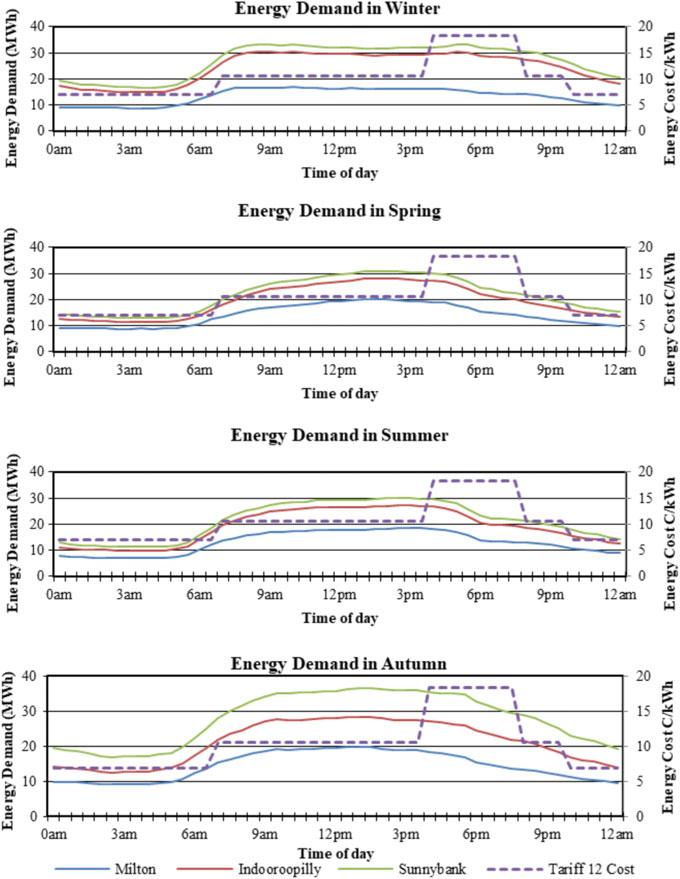
Fig.1.2 EnergyFig. 1.2.Energyconsumptionprofileoftheinvestigatingareasacrossthefour seasons
electricityconsumptionrisesby50%.However,throughoutthethreetariffperiods, Sunnybanksuburbwithaweeklyhouseholdincomeof$1,322recordsanexceptional energyuseofaround30MWh.
Miltonelectricityconsumptionduringthespringseasonunderdifferentenergytariffperiodsremainsconstant.Onthecontrary,IndooroopillyandSunnybankrecordan appreciableconsumptionduringthespringseasonandincreasefromaround15MWh toabout30MWhduringtheshoulderandpeakperiods.Further,Miltonenergyuse duringthewintershowssimilarpatternsofconsumption.However,Indooroopilly andSunnybankhavesimilarperiodsofsignificantconsumptionduringthespring season.Theperiodsofsignificantconsumptionsuggesttheincreaseinthedeploymentofelectricalloadsandoccupancyoftheresidents.Further,statisticalanalyses areperformedtoascertainthepossibilityoftherelationshipbetweenenergyuseand differenthoursofthedaywhenelectricityisused.Thebigquestioniswhetherthe amountofelectricityuseisinfluencedbythetimeoftheday.Acrossfourclimatic conditions,thesubstationhalf-hourlydataofthestudiedareasareanalysedagainst thetimeofthedayandtheresultsshowthecorrelationcoefficients,R2 withhigh probabilityvaluesgreaterthan0.05.Thisindicatesthatthenullhypothesiscannot berejected.Statistically,theNullhypothesisisdefinedbyHoasthehypothesisthat modelobservationsdecisionbasicallyfromchance,andthe p-valueisdefinedasan indexthatmeasuresthestrengthofevidenceagainstthenullhypothesisinasingle analysis[11].Theimplicationisthatapredictor,thetimeofthedaywhenelectricityisconsumedmightnothaveasignificantadditiontotheenergymodeldueto thevariabilityofthepredictor’svaluenotcorrelatingwithchangesintheresponse variable,whichistheenergyconsumptionofthecasestudyareas.Nevertheless,a lowprobabilityvaluelessthan0.05isindicatedduringthewinterseasonshowing thatthenullhypothesiscannotbeignoredastheresultsaresignificantat p = 0.02, 0.01and0.001.Thepossibledriversofincreasedelectricityconsumptionduringthe winterseasonincludingthermalcomfortabilityandheatingsystems.Nevertheless, thetimeofthedaywithalow p-valueismeaningfultotheenergymodelduetothe relationshipbetweenthevariabilityoftimeofthedayandtheresponsevariableduringthewinterseason.Theresultsofaseriesoftheanalysisofvariances(ANOVA) performedacrossthefourseasonsshowthatthetimeofconsumptionhasnoimpact onenergyuse.Apositivecorrelationexistsbetweenthetimeofthedayandaggregate electricityconsumptionduringthewinterseasonbecauseofthevariationofthedaily electricityconsumedandthecoefficientsofvariationofMilton,Indooroopilly,and Sunnybankindicating10%,13%,and20%respectively.Thegeneralenergymodel equation;Eq.(1.1),istherepresentationofsimplelinearregression.
whereE(Energy)istheresponsevariable,T(timeoftheday)isthepredictorvariable and βoistheregressioncoefficientand 2 isanerrortoaccountforthediscrepancy betweenthepredicteddatafromEq.(1.1)andtheobserved.
1.4Discussion
ThisstudyaimstosensitiseelectricityconsumersinQueensland,Australiaabout minimisingelectricitychargesandbillingstariffsthroughdeployingsmartmeters. Toachievethisobjective,thepatternofthestudiedareasenergyconsumptionis analysedtounderstandhowresidencesrespondtoelectricityuseatadifferenttime oftheday.Further,statisticalanalysesareperformedtodeterminetherelationship betweenelectricitydemandatvarioushoursofthedayanddifferenttariffingperiods.Thestudyexploresdifferentstudyareastodeterminehowconsumersrespond toelectricityconsumptionatdifferenttariffs’periods.Surprisingly,Miltonshows constantelectricityconsumptionstyleduringthesummer,springandthewinterseasonsinspiteofsuburbeconomicpotentialwhereasSunnybankenergyconsumption accountsfor20%ofthetotalenergyuse,possiblyduetolowactiveoccupancyof theresidents[12],demographicsizeandthenatureofbuildingapartments[13].The energypatternofthisstudyappearstobesimilartoChenetal.[14]findingswhich revealedavariationintheenergyusethroughoutadayaccordingtochangesinthe seasons.Also,theresultsshowadecreaseinenergyconsumptionbetween12a.m.and 6a.m.beingtheoff-peakperiods.Basedonthescaleofstudyinthispaper,substation energyhalf-hourlydataandtimeofthedayofelectricityuseofthestudiedareasare analysedcomparetoChenetal.[14]analysisbasedonenergyconsumptionofsome familiesusingvariousappliancesinsevencitiesduringthewinterseason.Inthis study,thehalf-hourlychartsshowacombinationofpassiveandactiveoccupancyof customersinMilton,Indooroopilly,andSunnybank.Theactiveoccupancyisusedto indicatewhencustomersaredeployingtheirapplianceswhilethepassiveoccupancy isaperiodwhenpeopleareeithersleepingornotusingtheirelectricalloads[12].The activeoccupancyfitsintheshoulderandpeakperiodswhilethepassiveoccupancy isappropriatefortheoff-peakperiods.Moreover,itoffersinformationsuchasthe conditionofoccupancyandthefrequencyofappliancesuse,andthecharacteristics ofappliancessuggestacombinationoflow-capacityandhigh-capacityelectrical loads.Similarly,atdifferenttariffperiods,theresponseoftheresidencesisindicated onthedemandprofilesacrossthefourseasons.Thefindingsaresuccessfulasthey canidentifytheneedtooptimisetheelectricityconsumptionandreduceexpenses therebyassistingtounderstandthesignificanceofintroducingsmartmeteringtechnologiesinQueensland,Australia.Previousstudiesdiscussedhowsmartmeters deployedtechnicalandeconomicmeasurestominimiseenergyconsumption[15]. Smartmetersfunctionwithdifferentcommunicationnetworksrangingfromhome areanetwork(HAN)toawideareanetwork(WAN)tobroadcastelectricitydata.The WANsupportsenergydatatransmissionfromthedownstreamviathetechnologicalcommunicationtechnologiessuchasGlobalSystemforMobileCommunication (GSM)toenergyprovider[16]whereastheHANbackstopstheconnectionamong appliancesandsmartmeters.Theintelligentsystemsfunctionwithcommunication protocolssuchasWi-Fi,andZig-Bee,facilitatingelectricitydatacommunication betweenneighbouringmeters[17],aswellasofferinginformationtoenergyusers. Basedonthecapabilityofsmartmeters,thepowercompanyinagreementwiththe
8O.C.Akinsipeetal.
consumercanconnectordisconnectenergysupplytomaximiseelectricityuse[6]. Theeconomicmodelsaretherepresentationsofthedemand-sideresponsemeasures tomaximisingenergyconsumption.Generally,theeconomicmeasuresarerepresentedbythetime-dependentsuchasthetime-of-use(ToU)amongothermeasures [18].AccordingtoTable 1.1,theutilitycompanyimplementedtheToUpricingsystemtocurtailpeakhoursuse,particularlyduringshoulderandpeakperiodswhenthe priceofelectricitygenerationincreasesexponentially[19].Thecustomersdeserve awarenessaboutsmartmeterscapabilitytoreducingpeakhoursenergyuseaswell asminimizingelectricityuseandexpenses.InFig. 1.2,residencesintheinvestigatingareasconsumeconsiderableelectricityduringtheshoulderperiodsaswellas thepeakperiods.Thisresultindicatesthelimitationsofthecontemporaryelectronic meteringtechnologiestoprovidereal-timeandfrequentinformationandelectricitybillingsystemtocustomers.Thus,electricityusersareunawareoftheextentof theirpowerconsumptionandthecostsincurredonelectricityuntilafter90days, approximately.Alackofreal-timeinformationcaninfluenceresidentialusersto increaseelectricityconsumptionwithattendantimpactsontheirelectricitybudgets. Thequestioniswhyusingautomatedtechnologiessuchasdishwashersandwashing machineswithoutsmartmeterstoregulateandmonitorenergyuseinaplacelike Queensland,Australia.Theresidentialcustomerswillbemorewillingtousetheir washingmachinesduringoff-peakhourswhentheelectricitypricesareeconomicalandmoreaffordablebydeployinginnovativetechnologieswiththecapabilityto facilitateandprovideareal-timeandbi-directionalflowofinformationbetweenthe energyvendorsandusersregardingelectricityusecriticaltoenergymanagement [20].Further,implementingsmartmeterswillsupportlocalandremotefeedbacks bybroadcastingandtransmittingenergyinformation[12].Ontopofthis,energy subscriberswillhavetheopportunitytoparticipateinthewholesaleelectricitymarket[15].Unlikeotherdevelopednations,powermetersareappliedintheresidential buildingstocalibrateaggregateelectricityconsumptionoveranextendedtimein Queensland,Australia.Thetechnologiesdependonrotatingdiscsforcalibrationbut withoutfunctionalmemorycompartmentsfordatastorageandmanagement.Electricityconsumptioniscomputedbycalibratingthepositionofthedialfromthelast measurement.Consequently,thesetechnologiescannotrecordandbroadcastrealtimeenergyusebecausethetechnologiesarenotincorporatedwithpowerandvoltage sensorsthatcollect,transferreal-timeenergydataandsupportbi-directionalrealtimeenergyprofilescollectionandreporting.Thisroleisperformedbyanauthorized energyvendorwhoaccessesthemetertotaketheelectricityreadingsperiodically [19].WhileEnergexofferscustomersthechoicesofenergypricesatdifferenthours ofthedayanddifferenttariffschemes,thereisstillalackofinnovativetechnologies tobroadcasttheinformationtoboththeutilityandcustomers.Consequently,optimisingelectricityuseandminimisingcostexpendedonelectricityisunattainable[15]. AsnotedbyFaruquietal.[21],thedeploymentofIn-HomeDisplays(IHDs)and AMIinNewSouthWales,Australia,facilitatedenergysavingsby8%andminimised energyconsumptionbyaround30%duringthesummerandthewinterseasonsat criticaltariffsandcharges.Therefore,itisimportantthatelectricityconsumersin
Queenslandarecognisantofsmartmeterstechnologiesoperationstominimisetheir budgetsonelectricityuseandpowerconsumption.
1.5Conclusion
ThispaperaimstosensitiseelectricityconsumersinQueenslandaboutdeploying smartmeterstominimiseenergyuseandreduceenergychargesandbillingstariffs therebyminimizingelectricityexpenses.Theresearchshowsthelimitationsofpower metertorecordandbroadcastreal-timeinformation.Basedonenergyplotsacrossthe fourseasons,theresultsshowthatelectricityisconsumedmoreduringtheshoulder periodsandthepeakperiods,andduringthemostexpensivetimesofthebilling cycle.Substitutingelectronicmetersforsmartmetersisamoresustainableapproach tostimulatingresidentialbuildingsenergymanagementbecausecustomerswillhave theopportunitytoregulatetheirappliancesandalsomonitortheirconsumption.The technologyisadaptedwithinformationandcommunicationtechnologiestopromote energypricesatdifferenthoursoftheday.Thisstudysuggeststhatimplementing smartmeterswillpromoteelectricityconsumptionandminimiseelectricitycostsof thestudyareas.Infuturestudies,moredataregardingtheelectricityconsumptionof differenthouseholds,thenumberofappliancesperhousehold,thepresentcondition ofthebuildingsandthefrequencyofusageofappliancesmayhavetobeexplored.
Acknowledgements ThispaperacknowledgesEnergyAustraliaandEnergexforprovidingthe substationenergydataandresidentialdatausedinthisresearch.Thisresearchdidnotreceiveany specificgrantfromfundingagenciesinthepublic,commercial,ornot-for-profitsectors.
References
1.Yang,L.,Yan,H.,Lam,J.C.:Thermalcomfortandbuildingenergyconsumptionimplications: areview.Appl.Energy 115(15),164–173(2014)
2.Zhao,H.-X.,Magoulès,F.:Areviewonthepredictionofbuildingenergyconsumption.Renew. Sustain.EnergyRev. 16(8),3586–3592(2012)
3.Britton,T.C.,Stewart,R.A.,O’Halloran,K.R.:Smartmetering:enablerforrapidandeffective postmeterleakageidentificationandwaterlossmanagement.J.Clean.Prod. 54,166–176 (2013)
4.Sharma,K.,Saini,L.M.:Performanceanalysisofsmartmeteringforsmartgrid:anoverview. Renew.Sustain.EnergyRev. 49,720–735(2015)
5.Kara,S.,Bogdanski,G.,Li,W.:Electricitymeteringandmonitoringinmanufacturingsystems. In:GlobalizedSolutionsforSustainabilityinManufacturing,pp.1–10.Springer(2011)
6.Aziz,A.F.A.,Khalid,S.N.,Mustafa,M.W.,Shareef,H.,ALiyu,G.:Artificialintelligentmeter developmentbasedonadvancedmeteringinfrastructuretechnology.Renew.Sustain.Energy Rev. 27,191–197(2013)
7.ABSStatistics(n.d.,02/05/2019)CensusQuickStats.(2016). https://quickstats.censusdata.abs. gov.au/census_services/getproduct/census/2016/quickstat
10O.C.Akinsipeetal.
8.Jablonsky,J.:MSExcelbasedsoftwaresupporttoolsfordecisionproblemswithmultiple criteria.Proced.Econ.Finance 12,251–258(2014)
9.Fumo,N.,Biswas,M.A.R.:Regressionanalysisforpredictionofresidentialenergyconsumption.Renew.Sustain.EnergyRev. 47,332–343
10.Energex.(n.d.,23/03/2017)Residentialtariffsandprices. https://www.energex.com.au/home/ our-services/pricing-And-tariffs/residential-customers/residential-tariffs-and-prices
11.Silva-Ayçaguer,L.C.,Suárez-Gil,P.,Fernández-Somoano,A.:Thenullhypothesissignificance testinhealthsciencesresearch(1995–2006):statisticalanalysisandinterpretation.BMCMed. Res.Methodol. 10,44–52(2010)
12.McKenna,E.,Richardson,I.,Thomson,M.:Smartmeterdata:balancingconsumerprivacy concernswithlegitimateapplications.EnergyPolicy 41,807–814(2012)
13.Kavousian,A.,Rajagopal,R.,Fischer,M.:Determinantsofresidentialelectricityconsumption: usingsmartmeterdatatoexaminetheeffectofclimate,buildingcharacteristics,appliancestock, andoccupants’behavior.Energy 55,184–194
14.Chen,S.,Li,N.,Yoshino,H.,Guan,J.,Levine,M.D.:Statisticalanalysesonwinterenergy consumptioncharacteristicsofresidentialbuildingsinsomecitiesofChina.EnergyBuild. 43(5),1063–1070(2011)
15.Siano,P.:Demandresponseandsmartgrids—asurvey.Renew.Sustain.EnergyRev. 30, 461–478(2014)
16.Aswathi,M.,Gandhiraj,R.,Soman,K.:Applicationandanalysisofsmartmeterdataalong withRTLSDRandGNUradio.Proced.Technol. 21,317–325(2015)
17.McKerracher,C.,Torriti,J.:Energyconsumptionfeedbackinperspective:integratingAustraliandatatometa-analysesonin-homedisplays.EnergyEffi. 6,387–405(2013)
18.Venkatesan,N.,Solanki,J.,Solanki,S.K.:Residentialdemandresponsemodelandimpacton voltageprofileandlossesofanelectricdistributionnetwork.Appl.Energy 96,84–91(2012)
19.McLaughlin,S.,McDaniel,P.,Aiello,W.:Protectingconsumerprivacyfromelectricload monitoring.In:Proceedingsofthe18thACMConferenceonComputerandCommunications Security,pp.87–98(2011)
20.Carroll,J.,Lyons,S.,Denny,E.:Reducinghouseholdelectricitydemandthroughsmartmetering:theroleofimprovedinformationaboutenergysaving.EnergyEcon. 45(9),234–243 (2014)
21.Faruqui,A.,Sergici,S.,Sharif,A.:Theimpactofinformationalfeedbackonenergyconsumption—asurveyoftheexperimentalevidence.Energy 35(4),1598–1608(2010)


